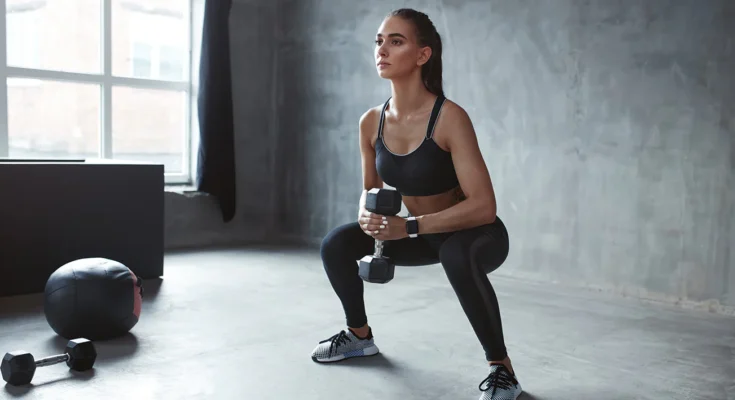Living a healthy and balanced life begins with the commitment to staying active and fit. Whether you’re a beginner taking your first steps toward fitness or a seasoned athlete looking to optimize your routine, understanding the fundamentals of cardio workouts, different types of workouts, and knowing how many sets per workout to perform can make all the difference.
In this blog, we’ll break down the essentials to help you craft an effective fitness routine that keeps you energized, motivated, and results-driven.
The Power of Cardio Workouts
Cardio workouts—short for cardiovascular exercises—are exercises that raise your heart rate and improve the efficiency of your heart, lungs, and circulatory system. These workouts help burn calories, strengthen the heart, and increase lung capacity.
Types of cardio workouts include:
- Running or Jogging: A classic method to boost endurance and burn fat.
- Cycling: Both indoor and outdoor cycling are excellent for cardiovascular health.
- Swimming: A low-impact, full-body cardio workout.
- HIIT (High-Intensity Interval Training): Alternating periods of intense effort and rest to spike heart rate.
- Jump Rope: A simple but highly effective method for quick cardio.
Incorporating cardio workouts into your weekly routine not only helps with weight management but also improves sleep, boosts mood, and supports heart health.

Exploring Different Types of Workouts
The journey to becoming active and fit requires more than just cardio. To maximize results and prevent plateaus, it’s important to integrate various types of workouts into your regimen.
Here are the key types:
- Strength Training: Focuses on building muscle using weights, resistance bands, or bodyweight exercises. Examples include squats, push-ups, and deadlifts.
- Flexibility Training: Enhances range of motion and reduces the risk of injury. Common practices include yoga and dynamic stretching.
- Balance and Stability: Helps improve posture and prevent falls. Exercises include single-leg stands, Bosu ball exercises, and Pilates.
- Functional Training: Mimics everyday movements like bending, lifting, and reaching to enhance overall strength and mobility.
Switching between various types of workouts keeps the body challenged and avoids boredom. It also ensures all muscle groups are engaged and developed.

How Many Sets Per Workout?
A common question in the fitness world is how many sets per workout should you do? The answer depends on your fitness goals, workout type, and experience level.
1. For Beginners
If you’re new to strength training or just starting your fitness journey, start with:
- 2–3 sets per exercise
- Focus on 8–12 repetitions per set
- Aim for full-body workouts 2–3 times per week
2. For Muscle Growth (Hypertrophy)
To build muscle mass:
- 3–4 sets per exercise
- 6–12 reps per set
- Train each muscle group twice a week for optimal results
3. For Endurance
If you’re training for muscular endurance or sport-specific goals:
- 2–4 sets per exercise
- 12–20+ reps per set
- Focus on lighter weights with less rest between sets
4. For Strength and Power
To gain strength and power:
- 3–6 sets per exercise
- 3–6 reps per set
- Use heavier weights and longer rest intervals
Understanding how many sets per workout are right for you is key to achieving targeted results without overtraining. Always listen to your body, track your progress, and adjust accordingly.
Staying Active and Fit for the Long Term
Being active and fit doesn’t have to mean spending hours in the gym. The key is consistency, variety, and enjoying the process.
Tips to stay committed:
- Schedule your workouts: Treat them like important appointments.
- Mix it up: Rotate between cardio, strength, and flexibility-focused days.
- Set achievable goals: Track small wins to stay motivated.
- Fuel your body: Eat balanced meals and stay hydrated.
- Rest and recover: Don’t underestimate the power of rest days and quality sleep.
Remember, fitness is a lifestyle, not a temporary challenge. Incorporating cardio workouts, experimenting with different types of workouts, and determining how many sets per workout are right for you will help build a routine that supports both physical and mental well-being.
Ready to stay active and fit? Remember: mix your types of workouts, push yourself during your cardio workouts, and tailor how many sets per workout to meet your unique goals. Let every drop of sweat move you closer to a stronger, healthier you!

Final Thoughts
Achieving your fitness goals is about finding the right balance between effort, variety, and recovery. By including diverse types of workouts, focusing on impactful cardio workouts, and understanding how many sets per workout are optimal for your goals, you’ll be better equipped to stay active and fit for life.
Whether you’re chasing performance, weight loss, or general health, fitness isn’t a destination—it’s a journey of consistent self-care. Embrace that journey with dedication, and your results will speak for themselves.
FAQs: Your Workout Questions Answered
Q1: What are the best cardio workouts for weight loss?
A: High-Intensity Interval Training (HIIT), running, and jump rope are some of the most effective cardio workouts for burning calories quickly. These help elevate your metabolism and improve fat loss.
Q2: How do I know which types of workouts I need?
A: It depends on your goals. Want strength? Focus on resistance training. Looking for heart health? Try cardio workouts. For flexibility and stress relief, yoga is a great choice. Combine different types of workouts for a balanced routine.
Q3: How many sets per workout should a beginner do?
A: Beginners should start with 2–3 sets per workout for each exercise, keeping the reps between 8–12. This helps build foundational strength without overexertion.
Q4: How can I stay active and fit with a busy schedule?
A: Shorter workouts like 20-minute HIIT, walking during breaks, or quick bodyweight routines at home can help you stay active and fit even on tight schedules. Consistency matters more than duration.
Q5: Should I do cardio before or after weight training?
A: If your goal is fat loss or general fitness, either order works. However, if building strength or muscle is your priority, do cardio workouts after lifting so you’re not fatigued during your sets.



